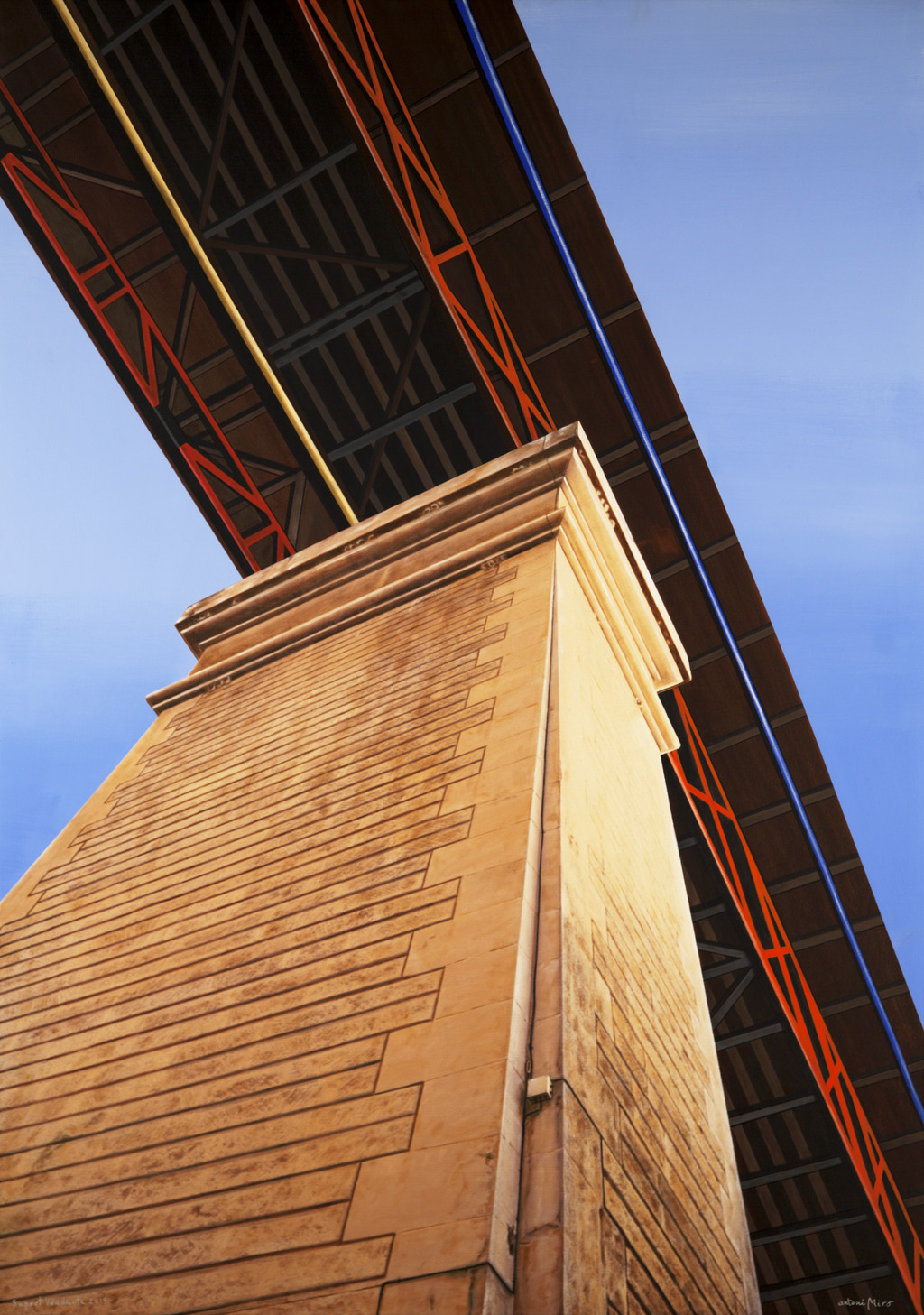Suport viaducte (Viaduct support)
In his “Slopes and Bridges” sub-series, Antoni Miró pays homage to his home town of Alcoi as the material expression of a hard-working society that is committed to culture. The town has long grappled with its mountainous setting when planning urban growth due to the population increase as a consequence of the industrial expansion. Alcoi has built various bridges throughout its long history, all of them feats of engineering given the rough terrain and the scale of the works.
Some say that the townsfolk lost the opportunity of having a wide-span metal bridge, which was first proposed by the engineer Próspero Lafarga. Nevertheless, the solution that was finally chosen was, in its technical rotundity and rationality, very modern. The canon for the 19th Century metal railway bridge was to be adapted to an urban bridge of great transcendence for the city.
The bridge is an archetypal one and that is sufficient reason for painting it. In any case, Miró finds both the bridge’s design and size interesting, and it also forms part of both Miró’s imaginary and that of Alcoi’s townsfolk. The composition takes a low-angle shot of the bridge, in which the metal beam, a lattice, and the deck are depicted over a diagonal line of the canvas, with the pile below, which is oriented almost as the second one.
The painting of the bridge pillar is detailed, including incidental items such as cables and junction boxes. The stone blocks of the pillar show the marks left by the passage of time. By contrast, even though the shaft is shown in a hyper-realistic way, the lintel is an idealisation of the real one.
As in other works by Miró, this canvas is realistic in some parts and deliberately transforms others. In some cases, this is to avoid counter-productive outcomes. Thus elements may be removed if they make it harder to highlight a given feature that the artist wants to portray. In other cases, as in this picture, the image of the key element is idealised and enhanced. Although the final scene is not wholly true to real life, this rendition makes it more worthwhile.
Let us see what kind of alterations Miró makes in this work. The metal structure is shown without the reinforced concrete cladding because the latter would lessen the span’s visual lightness. Miró gives it a reddish tonality, which does not correspond with that of the original. Some of the metal bars have also been left out because they would mess up the perspective by overlapping others. Two lines of colour are traced — one yellow and one blue. These represent well-aligned conduits that do not exist and are quite different from those on the real bridge.
We are already aware that any painting is not the original but merely an interpretation of it, and that the figuration may be more or less realistic. What we see in this canvas is an aesthetically enhanced pictorial rendering of the bridge. It is, as it were, a blend of what the bridge should have been and what it might end up being.
Santiago Pastor Vila
